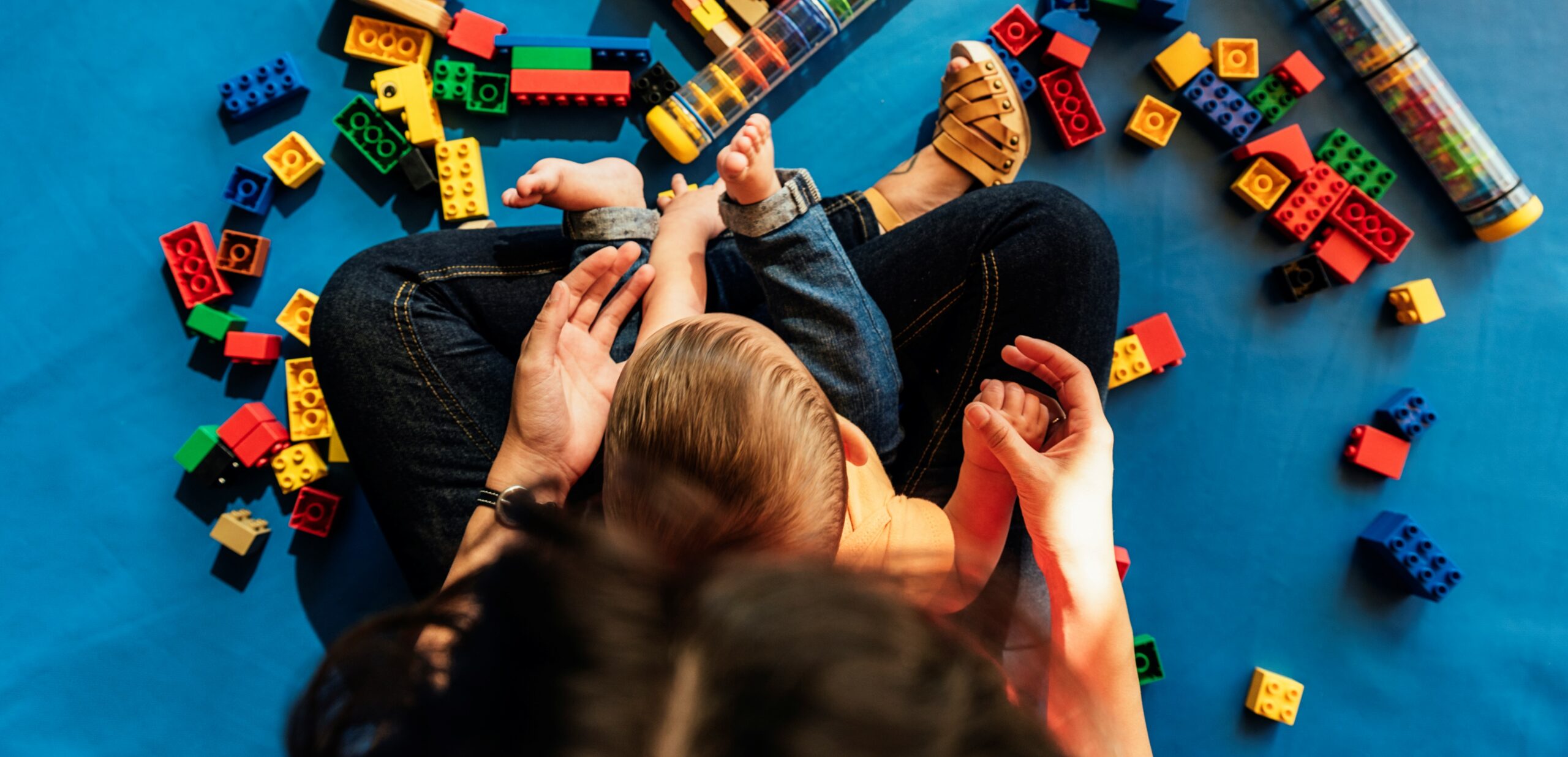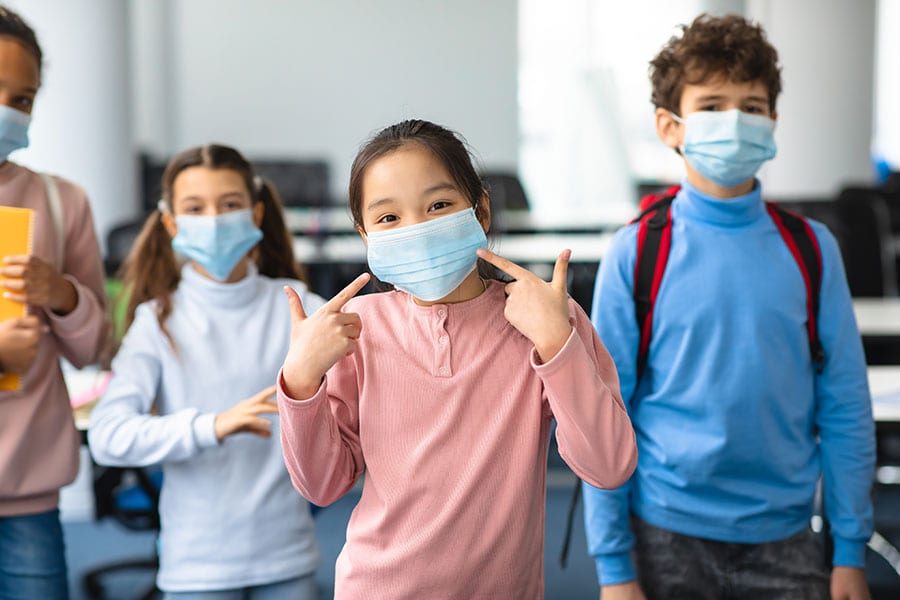The pandemic has exacerbated depression and anxiety, especially among children. A new Child Mind Institute survey supported by Morgan Stanley shows the depth and breadth of the problem.
Fever, cough and shortness of breath are among the typical symptoms of COVID-19 that we are all familiar with. What we are hearing less about is anxiety, depression and suicidal ideation. Yet these mental health issues have risen dramatically during the pandemic, particularly among children and young adults. According to the CDC, nearly 75% of young adults now suffer from at least one mental health or drug-related problem, and one in four have struggled with suicidal thoughts since the pandemic began.1
“We knew that the extraordinary stresses and societal upheaval happening in response to the pandemic would have widespread negative consequences on most people’s wellbeing, including children,” says Aki Nikolaidis, PhD, a research scientist in the Center for the Developing Brain at the Child Mind Institute, a partner in the Morgan Stanley Alliance for Children’s Mental Health(Alliance).“So we gathered a group of scientists and clinicians to create a tool that would give us an accurate and broad snapshot of how COVID-19 has impacted their lives and mental health.”
A Window on the First Wave
They called this project the Coronavirus Health and Impact Survey (CRISIS)2. Supported by the Alliance—formed in February 2020 to leverage the resources of the Morgan Stanley Foundation and key nonprofit partners to help address children’s mental health—and by the National Institute of Mental Health, CRISIS is based on data collected in April 2020, at the height of the first wave of the pandemic. Researchers surveyed 5,646 participants in both the U.S. and the U.K., focusing on the moods, worries and life changes of the participants and their children in order to capture meaningful amounts of real-time data. The National Institute of Mental Health gave their 2020 Director’s Award to the researchers working on the CRISIS survey. The team was recognized for their outstanding efforts in the rapid implementation of mood surveys in response to the COVID-19 pandemic.
The researchers noted that the effects of other catastrophic events had been studied with data collected after such events were over. With the CRISIS research, they aimed to look at the risk and protective factors for wellbeing during this prolonged threat. “We wanted to start collecting the data as rapidly as possible, so we could be more actively attuned to how the unfolding pandemic was impacting people’s mental health,” says Nikolaidis. He and his team hoped to identify “the main drivers that are exacerbating mental health symptoms, as well as factors that may help protect mental health at this time.” The results showed that during this period, about 70% of children and adults felt lonely, irritable and fidgety, and a little more than half (55%) of children felt very, or moderately, sad, depressed or unhappy, compared to 25% of adults.
Identifying Those Most at Risk
The study also revealed that preexisting mental health problems, including anxiety and depression, were the most significant factors associated with a higher incidence of mental health issues in children during COVID-19. “This suggests that those previously struggling with their mental health are now among the most severely affected, and they are experiencing the highest need for intervention and support,” says Nikolaidis.
Among adults, anxiety and worries about COVID-19 were either the first or second most important driver of their pandemic mental health. But for children, disruptions in daily life—including isolation, financial changes and food insecurity—were a stronger driver than their worries about COVID-19 itself. “This finding is consistent with what we already know about the importance of regular, predictable, daily routines for pediatric mental health,” the researchers stated. “It suggests that looking at changes in children’s lives may be key to identifying which children are, and will be, most at risk for negative psychological impact during and after the pandemic.”
With U.S. infections surging again, Nikolaidis and his fellow researchers hope that the insights gleaned from their survey can help protect those at higher risk this time around. In particular, minimizing further disruption will be crucial to safeguarding the mental health of children. Likewise, watching out for signs of increased anxiety and depression, especially in those with preexisting mental health diagnoses or those experiencing significant worry, can help get them the care they need sooner, leading to better coping and a healthier outcome.
Morgan Stanley has funded follow-up surveys to identify any changes in behavioral and mental health among children and adults as the pandemic continues, and provide insight into potential long-term effects. “The first phase of our follow-up study, conducted in November 2020 has showed highly consistent findings,” Nikolaidis added. “Disruptions in daily life for children and adults in the U.S. and the U.K. were still one of the dominant drivers of mental health during the second wave of the pandemic, along with preexisting mental health conditions and worries about COVID-19.”
Morgan Stanley Rises to the Challenge
The Morgan Stanley Alliance for Children’s Mental Health continues to support children and families in this unsettling time through additional educational initiatives, especially in secondary and higher education. This includes a significant grant to the Child Mind Institute to provide digital mental health resources for children, adolescents and young adults in the U.S., with a focus on vulnerable communities that traditionally lack access to these resources.
In the U.K., Morgan Stanley is supporting Place2Be with the launch of their free online training program for teachers to build skills and capacity to support positive mental health in school communities, following lockdowns.
Just recently, the Alliance hosted its inaugural convening to engage educators, school administrators and mental health professionals virtually across the U.S. in discussing pandemic-related mental health effects on young people and the importance of building communities of wellness and healing in response.
Since the crisis began, $175 million in emergency funding has been allocated to hospitals and other medical facilities, but less than 1% of that has gone specifically to mental health and substance abuse services.3 These efforts by the Alliance and its partners, including this latest research from the Child Mind Institute, are aimed at helping to correct that imbalance. “The overarching goal of the Alliance is to use our resources and reach to help improve children’s mental health around the world, which is at risk now more than ever,” says Joan Steinberg, Morgan Stanley’s Global Head of Community Affairs, the President of the Morgan Stanley Foundation and the Chair of the Morgan Stanley Alliance for Children’s Mental Health. “Research like the CRISIS study is imperative in understanding what this pandemic has done to children’s mental health, in order to help prevent the rise in mental health challenges going forward and to help the current generation of children develop the resilience to come out of this stronger.”
1Czeisler MÉ , Lane RI, Petrosky E, et al. Mental Health, Substance Use, and Suicidal Ideation During the COVID-19 Pandemic — United States, June 24–30, 2020. MMWR Morb Mortal Wkly Rep 2020;69:1049–1057. DOI: http://dx.doi.org/10.15585/mmwr.mm6932a1
2Nikolaidis, A. et al. The Coronavirus Health and Impact Survey (CRISIS) reveals reproducible correlates of pandemic-related mood states across the Atlantic.
3https://www.washingtonpost.com/health/2020/11/23/covid-pandemic-rise-suicides/
LEARN MORE ABOUT COVID’S MENTAL HEALTH IMPACT : DOWNLOAD THE FULL REPORT HERE!




